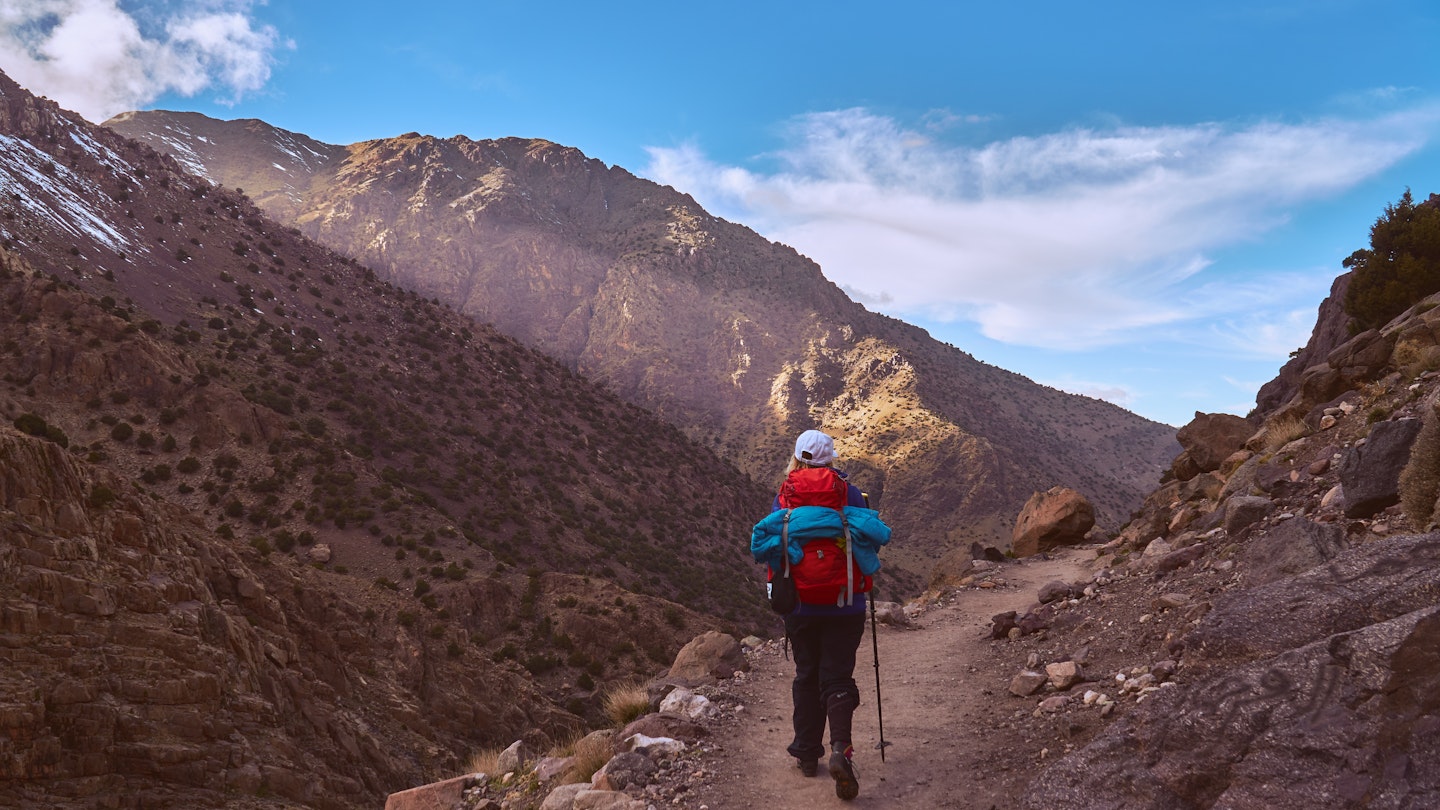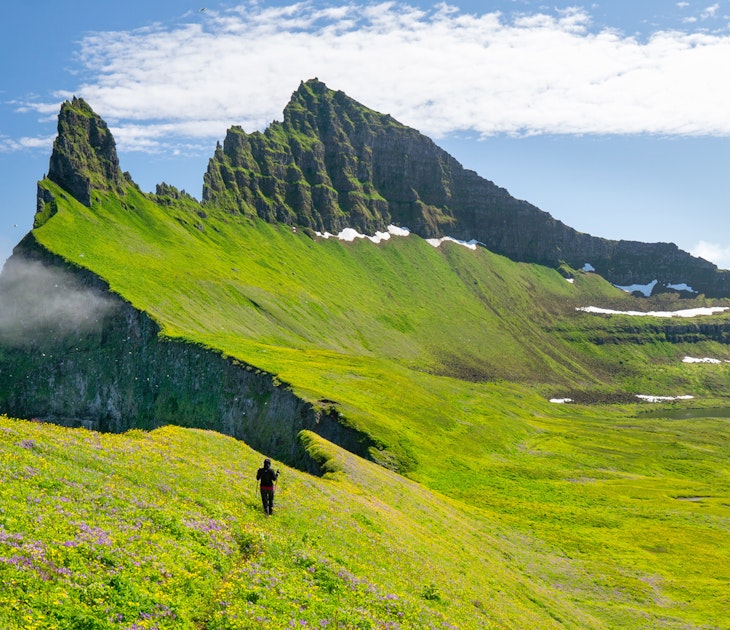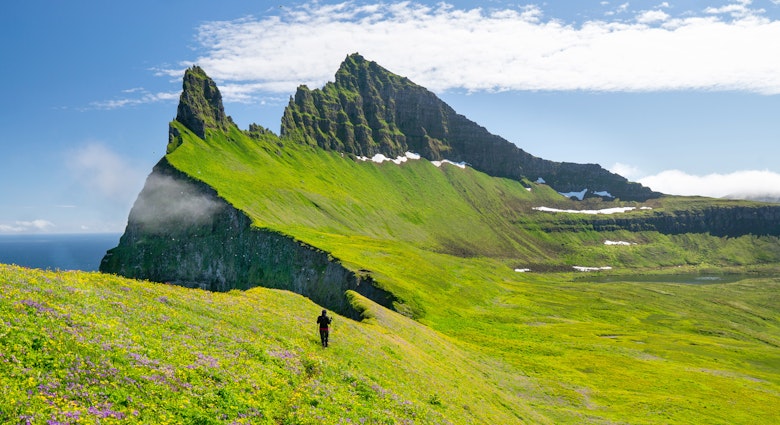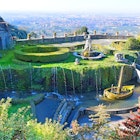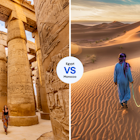Morocco is home to some of the world’s most striking mountain landscapes. Ramble through fragrant forests of cedar trees and walk along verdant valleys where time has stood still. More adventurous hikers scale North Africa’s tallest peak or head off on demanding multi-day treks across rugged massifs.
With peaks and valleys to suit all abilities, atmospheric eco-friendly lodgings, and a tasty tagine waiting for you at the journey’s end, here are our top picks for trekking in Morocco.
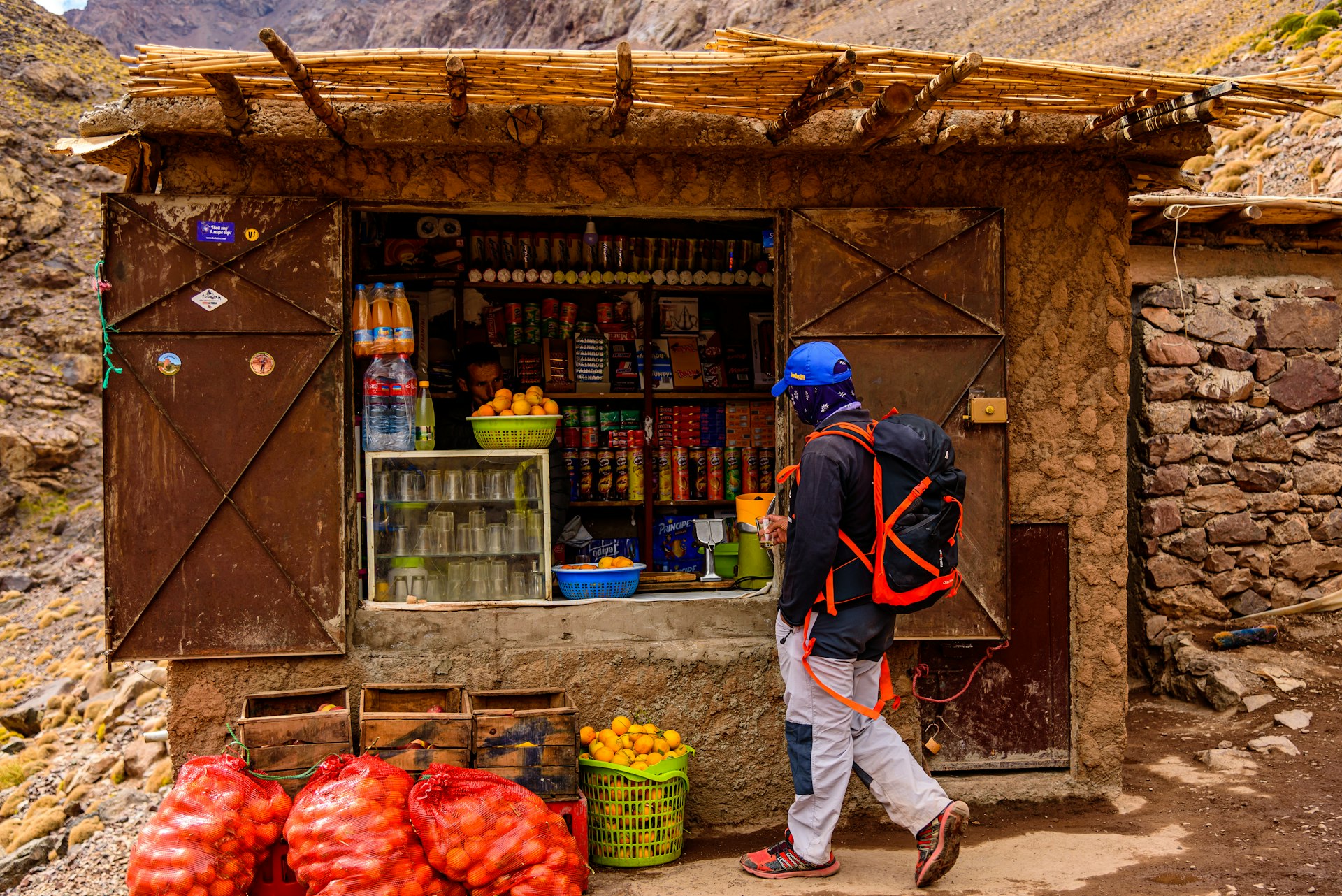
1. Jebel Toubka
Best high-altitude hike
27km (16.7 miles), 2 days
The High Atlas – Morocco’s loftiest mountain range, known to the locals as Idraren Draren or Mountains of Mountains – runs diagonally across the country for almost 1000km (620 miles) and is a trekker’s paradise, especially in spring and autumn.
The biggest draw is the ascent of Jebel Toubkal, North Africa’s highest peak at 4167m (13,670ft). Much of the trekking is done on the first day, a six-hour hike zigzagging upwards through a craggy valley. Stop to acclimatize and share campfire tales with fellow climbers at a rustic refuge, before setting off at first light to scale the snow-dusted summit. You’ll need snow equipment in the winter months but if you’re blessed with brilliant blue skies, you’ll have views all the way to the Sahara.
With more time, you can take on the challenging week-long Toubkal Circuit and, as well as tackling Toubkal, you’ll meander between remote Amazigh (Berber) villages, crossing fertile valleys, rocky massifs, and panoramic passes.
The mountain village of Imlil (90 minutes from Marrakesh) is a hub for hikers and the place to hire a mountain guide (compulsory in Toubkal National Park) and book a bed at one of the refuges. There are plenty of other treks to try: stay in style at the sustainable Kasbah du Toubkal and you can hike to their remote lodge in the Azzaden Valley.

2. The Monkey Trail (3M Squared Loop Trail)
Best for wildlife watching
7.4km (4.6 miles), 2.5 hours
Close to Ifrane – aka Morocco’s Little Switzerland, thanks to its Alpine architecture and spotless streets – Ifrane National Park is spread over 500 sq km (310 sq miles) of the Middle Atlas mountains. It’s famed for its fragrant forests of Atlas cedars and troops of endangered Barbary macaques, a one-of-a-kind primate that was once widespread in Europe and North Africa but is now only found in small pockets of Morocco and Algeria’s northern mountain ranges.
The park has several well-marked, easy-to-moderate trails but – as the name suggests – the Monkey Trail will give you a good chance of spotting the mischievous macaques, as well as other forest residents, such as foxes and wild boar. It’s great for trail runners and mountain bikers too, shaded by lofty oak and cedar trees.
Enlist a guide, such as Saleh Boudaoud, to discover more about the park’s flora and fauna and the threats the macaques face from human interaction and poaching for the exotic pet trade.

3. Akchour Waterfall and God’s Bridge
Best for waterfall lovers
13.8km (8.6 miles), 5 hours
Tucked into the green folds of the Rif Mountains, charming Chefchaouen is famed for its endlessly photogenic blue-hued medina. But once you’ve explored its cobbled streets and people-watched from its pretty squares, take to the trails of the vast Talassemtane National Park with its luminous waterfalls and forests of firs.
This popular hike starts in the village of Akchour, around 45 minutes from Chefchaouen by grand-taxi. Head towards the hydroelectric dam and a fork in the road where the well-trodden left-hand trail dips through evergreen forest and between moss-covered rock formations. After around 45 minutes you’ll reach the first waterfall but keep going until you reach the larger cascade that plunges into an emerald-green pool – perfect for a refreshing dip before you make your way back to the dam.
Once there, you can extend the hike by taking the right-hand trail and the steep scramble to God’s Bridge, a natural arch straddling two cliffs. Then stop at one of the roadside stalls near the Akchour end of the trail for a well-earned tagine, or immerse yourself in the park with a stay in a stunning wood-and-stone cabin at the eco-friendly Ermitage d’Akchour.
4. Jebel Saghro Circuit
Best for off-the-beaten-track trekking
90km (56 miles), 5 days
Sandwiched between the High Atlas and the Sahara’s shifting sands in south-east Morocco, the Saghro Massif possesses a stark beauty, with yawning canyons, flat-topped mesas, otherworldly rock formations, and arid desert-scapes.
Its stony tracks are frequented more by the semi-nomadic Aït Atta tribe than tourists and while there are steep ascents and descents, trails are generally lower-lying and less challenging than the High Atlas. Its highest peak, Amalou n’Mansour, sits at 2712m (16,85ft) and most passes are between 1500m (932ft) and 2500m (1553ft).
The Saghro Circuit takes five days starting at Tagdilt near Boumalne Dades and ending at Kalaat M’Gouna. Add an extra day to reach the peak of Jebel Kouaouch (2595m/1612ft) with views to rival those from Toubkal. If you’re going without a guide, you’ll need to be confident at navigating and stock up on supplies before you set off.
And there are plenty of shorter out-and-back trails and one-way walks. To the south, the Kasbah Hôtel Aït Omar in the kasbah-studded, oasis town of Nkob makes a great base, with its vegetarian-friendly restaurant and insider tips for routes and local guides.

5. Moulay Idriss to Volubilis
Best for culture vultures
4km (2.5 miles), 45 minutes one-way
Just 90 minutes from Fez and 40 minutes from Meknes, the holy, hilltop town of Moulay Idriss Zerhoun is the perfect starting point for a leisurely ramble to the archaeological site of Volubilis, a far-flung outpost of the Roman Empire turned Unesco World Heritage Site.
Walk downhill from the bus station to a roundabout where signs point you in the direction of a slower pace of life, as you wind your way through pine forests, olive groves, and across a fertile plain towards triumphal arches, ancient columns, and glittering mosaics.Head back to the whitewashed town on foot, by taxi or donkey and refuel with a traditional three-course feast on the terrace of Dar Zerhoune while you drink in the views.

